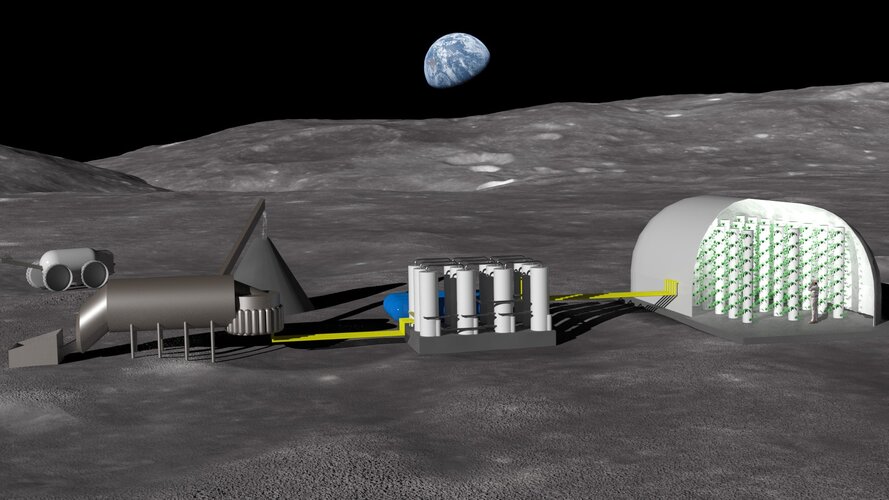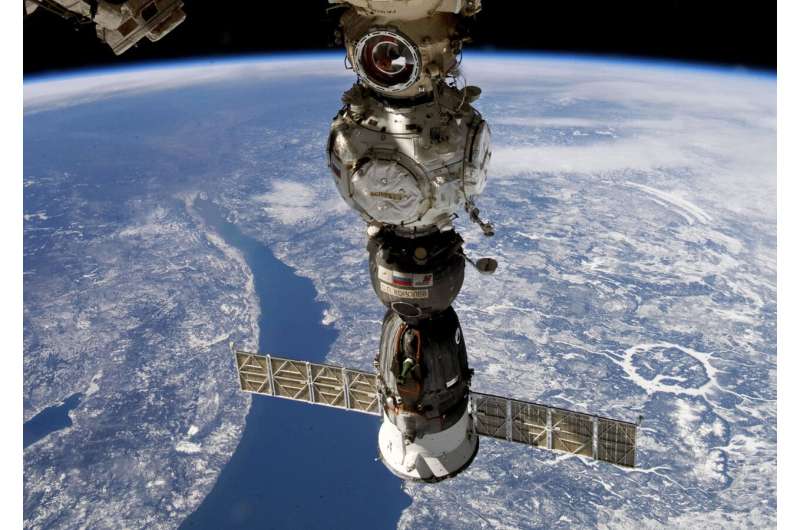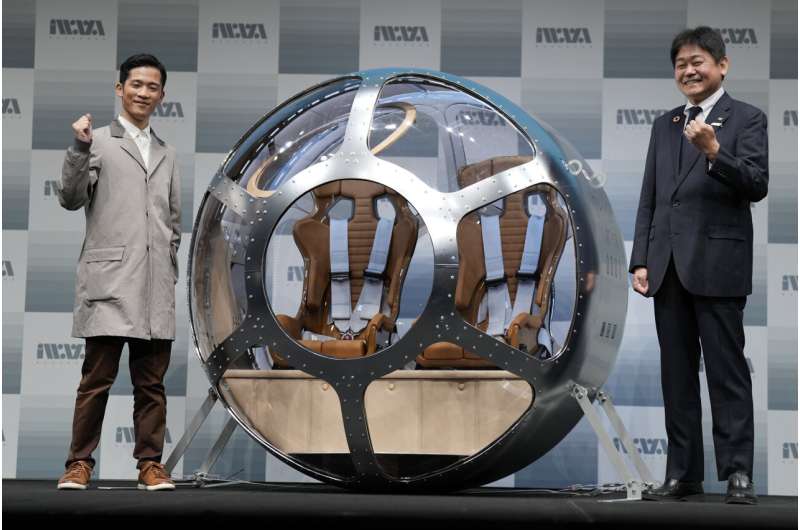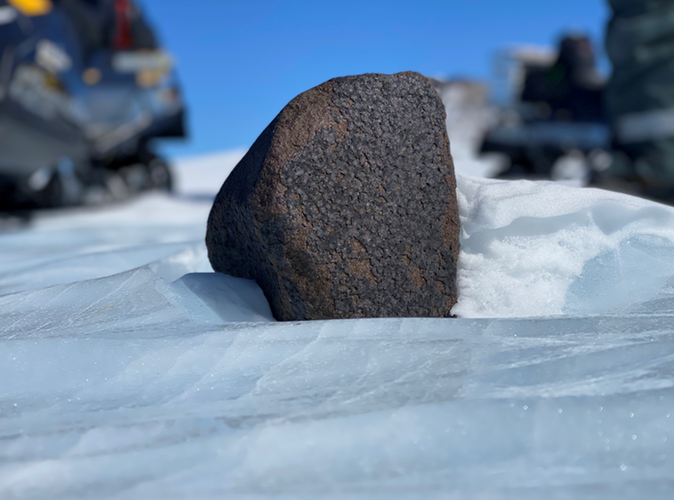
Copernical Team
Wednesday, 22 February 2023 11:02
Mercury's black disc helps sharpen Solar Orbiter's view
Paris (ESA) Feb 22, 2023
 This year started with a nice imaging opportunity for Solar Orbiter, and a chance to further improve the quality of its data. On 3 January 2023, inner planet Mercury crossed the spacecraft's field of view, resulting in a transit where Mercury appeared as a perfectly black circle moving across the face of the Sun.
A number of the ESA/NASA Solar Orbiter's instruments captured the transit. In
This year started with a nice imaging opportunity for Solar Orbiter, and a chance to further improve the quality of its data. On 3 January 2023, inner planet Mercury crossed the spacecraft's field of view, resulting in a transit where Mercury appeared as a perfectly black circle moving across the face of the Sun.
A number of the ESA/NASA Solar Orbiter's instruments captured the transit. In
 This year started with a nice imaging opportunity for Solar Orbiter, and a chance to further improve the quality of its data. On 3 January 2023, inner planet Mercury crossed the spacecraft's field of view, resulting in a transit where Mercury appeared as a perfectly black circle moving across the face of the Sun.
A number of the ESA/NASA Solar Orbiter's instruments captured the transit. In
This year started with a nice imaging opportunity for Solar Orbiter, and a chance to further improve the quality of its data. On 3 January 2023, inner planet Mercury crossed the spacecraft's field of view, resulting in a transit where Mercury appeared as a perfectly black circle moving across the face of the Sun.
A number of the ESA/NASA Solar Orbiter's instruments captured the transit. In
Published in
News
Tagged under
Wednesday, 22 February 2023 11:02
Russia claims Progress leak caused by an "external impact"
Space Coast FL (SPX) Feb 22, 2023
 Roscosmos on Tuesday blamed an "external impact," not a manufacturing defect, for a coolant leak from an unmanned Russian supply ship docked at the International Space Station on February 11.
High-resolution pictures of the Progress MS-21 spacecraft were taken by cosmonauts using the ISS' 17-meter-long Canadarm2 robotic arm, which revealed a 12-millimeter hole where the coolant fluid pour
Roscosmos on Tuesday blamed an "external impact," not a manufacturing defect, for a coolant leak from an unmanned Russian supply ship docked at the International Space Station on February 11.
High-resolution pictures of the Progress MS-21 spacecraft were taken by cosmonauts using the ISS' 17-meter-long Canadarm2 robotic arm, which revealed a 12-millimeter hole where the coolant fluid pour
 Roscosmos on Tuesday blamed an "external impact," not a manufacturing defect, for a coolant leak from an unmanned Russian supply ship docked at the International Space Station on February 11.
High-resolution pictures of the Progress MS-21 spacecraft were taken by cosmonauts using the ISS' 17-meter-long Canadarm2 robotic arm, which revealed a 12-millimeter hole where the coolant fluid pour
Roscosmos on Tuesday blamed an "external impact," not a manufacturing defect, for a coolant leak from an unmanned Russian supply ship docked at the International Space Station on February 11.
High-resolution pictures of the Progress MS-21 spacecraft were taken by cosmonauts using the ISS' 17-meter-long Canadarm2 robotic arm, which revealed a 12-millimeter hole where the coolant fluid pour
Published in
News
Tagged under
Wednesday, 22 February 2023 07:13
Farming on the Moon
 Image:
Farming on the Moon
Image:
Farming on the Moon
Published in
News
Tagged under
Tuesday, 21 February 2023 18:05
Roscosmos: Russian spacecraft leak caused by external impact

A coolant leak from an uncrewed Russian supply ship docked at the International Space Station resulted from an external impact and not a manufacturing flaw, Russia's space corporation said Tuesday.
Published in
News
Tagged under
Tuesday, 21 February 2023 14:16
Japanese startup unveils balloon flight space viewing tours

Published in
News
Tagged under
Tuesday, 21 February 2023 09:03
Copernicus Sentinel-2 helps explorers unearth rare 7.6 kg meteorite in Antarctica

Copernicus Sentinel-2 helps explorers unearth rare meteorite
Published in
News
Tagged under
Tuesday, 21 February 2023 10:31
China releases Chang'e-4 payloads' scientific datasets
Beijing (XNA) Feb 20, 2023
 China has released a new batch of datasets from the payloads installed on the Chang'e-4 probe on the official website of the Lunar and Planetary Data Release System.
The datasets include 3,991.1 MB of 803 data files obtained by the four scientific payloads on the Chang'e-4 lander and rover between December 26, 2021 and January 10, 2022.
The Chang'e-4 probe, launched on Dec 8, 2018, m
China has released a new batch of datasets from the payloads installed on the Chang'e-4 probe on the official website of the Lunar and Planetary Data Release System.
The datasets include 3,991.1 MB of 803 data files obtained by the four scientific payloads on the Chang'e-4 lander and rover between December 26, 2021 and January 10, 2022.
The Chang'e-4 probe, launched on Dec 8, 2018, m
 China has released a new batch of datasets from the payloads installed on the Chang'e-4 probe on the official website of the Lunar and Planetary Data Release System.
The datasets include 3,991.1 MB of 803 data files obtained by the four scientific payloads on the Chang'e-4 lander and rover between December 26, 2021 and January 10, 2022.
The Chang'e-4 probe, launched on Dec 8, 2018, m
China has released a new batch of datasets from the payloads installed on the Chang'e-4 probe on the official website of the Lunar and Planetary Data Release System.
The datasets include 3,991.1 MB of 803 data files obtained by the four scientific payloads on the Chang'e-4 lander and rover between December 26, 2021 and January 10, 2022.
The Chang'e-4 probe, launched on Dec 8, 2018, m
Published in
News
Tagged under
Tuesday, 21 February 2023 10:31
Sols 3744-3745: The One That Got Away
Pasadena CA (JPL) Feb 20, 2023
 The team was eagerly awaiting our downlink this morning to hear how the drill attempt from Sol 3742 went. The images came down and indeed there was a drill hole... a mini drill hole... and sadly not deep enough to get to a sufficient depth for the drill assembly to start collecting sample. This was our fourth attempt to drill this marker band, and we gave it our best shot from both a geology and
The team was eagerly awaiting our downlink this morning to hear how the drill attempt from Sol 3742 went. The images came down and indeed there was a drill hole... a mini drill hole... and sadly not deep enough to get to a sufficient depth for the drill assembly to start collecting sample. This was our fourth attempt to drill this marker band, and we gave it our best shot from both a geology and
 The team was eagerly awaiting our downlink this morning to hear how the drill attempt from Sol 3742 went. The images came down and indeed there was a drill hole... a mini drill hole... and sadly not deep enough to get to a sufficient depth for the drill assembly to start collecting sample. This was our fourth attempt to drill this marker band, and we gave it our best shot from both a geology and
The team was eagerly awaiting our downlink this morning to hear how the drill attempt from Sol 3742 went. The images came down and indeed there was a drill hole... a mini drill hole... and sadly not deep enough to get to a sufficient depth for the drill assembly to start collecting sample. This was our fourth attempt to drill this marker band, and we gave it our best shot from both a geology and
Published in
News
Tagged under
Tuesday, 21 February 2023 10:31
Fortuna Investments announces US expansion and first space investment
Miami FL (SPX) Feb 20, 2023
 Fortuna Investments ("Fortuna"), a venture capital and advisory firm founded by Justus Parmar, is pleased to announce its expansion to the U.S. market with the opening of an office in Miami Beach, Florida. From this strategic vantage point, the firm plans to invest in companies and entrepreneurs in both the burgeoning space industry as well as clean-tech and other emerging industries.
In c
Fortuna Investments ("Fortuna"), a venture capital and advisory firm founded by Justus Parmar, is pleased to announce its expansion to the U.S. market with the opening of an office in Miami Beach, Florida. From this strategic vantage point, the firm plans to invest in companies and entrepreneurs in both the burgeoning space industry as well as clean-tech and other emerging industries.
In c
 Fortuna Investments ("Fortuna"), a venture capital and advisory firm founded by Justus Parmar, is pleased to announce its expansion to the U.S. market with the opening of an office in Miami Beach, Florida. From this strategic vantage point, the firm plans to invest in companies and entrepreneurs in both the burgeoning space industry as well as clean-tech and other emerging industries.
In c
Fortuna Investments ("Fortuna"), a venture capital and advisory firm founded by Justus Parmar, is pleased to announce its expansion to the U.S. market with the opening of an office in Miami Beach, Florida. From this strategic vantage point, the firm plans to invest in companies and entrepreneurs in both the burgeoning space industry as well as clean-tech and other emerging industries.
In c
Published in
News
Tagged under
Tuesday, 21 February 2023 10:31
NuSpace and GomSpace signs MoU to develop an extended value proposition in Singapore NewSpace
Aalborg, Denmark (SPX) Feb 20, 2023
 GomSpace, a satellite company, has signed a Memorandum of Understanding (MoU) with NuSpace Pte. Ltd, a Singapore-based company providing space-based infrastructure services. The partnership will allow the parties to develop space projects in Singapore, leveraging NuSpace's expertise in satellite as a service and GomSpace's experience in delivering space missions and equipment.
The combinat
GomSpace, a satellite company, has signed a Memorandum of Understanding (MoU) with NuSpace Pte. Ltd, a Singapore-based company providing space-based infrastructure services. The partnership will allow the parties to develop space projects in Singapore, leveraging NuSpace's expertise in satellite as a service and GomSpace's experience in delivering space missions and equipment.
The combinat
 GomSpace, a satellite company, has signed a Memorandum of Understanding (MoU) with NuSpace Pte. Ltd, a Singapore-based company providing space-based infrastructure services. The partnership will allow the parties to develop space projects in Singapore, leveraging NuSpace's expertise in satellite as a service and GomSpace's experience in delivering space missions and equipment.
The combinat
GomSpace, a satellite company, has signed a Memorandum of Understanding (MoU) with NuSpace Pte. Ltd, a Singapore-based company providing space-based infrastructure services. The partnership will allow the parties to develop space projects in Singapore, leveraging NuSpace's expertise in satellite as a service and GomSpace's experience in delivering space missions and equipment.
The combinat
Published in
News
Tagged under

